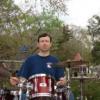
Posted
When can we expect official 2.0 videos?
Mon, 2022-11-07 - 21:40 Permalink
"Although even experienced users might possibly find one or two details they weren't aware of yet."
For me, that is an understatement. Very useful video! I've been wrestling on and off with Synfire for years, but with version 2 and now this video things are coming into sharper focus.
In the intervening years I've studied up on music theory and some of Synfires unique strengths are starting to make sense. Dangerous freedoms! As a former computer programmer, I'd really like to get to know the mysterious KIM better. I believe others have expressed a similar interest.
Tue, 2022-11-08 - 18:01 Permalink
The first video is really good and very helpful. But from my perspective, by far the most important video tutorial is one that pedagogically explains the essential and Synfire-unique concepts. Without a good understanding of those concepts one will just become frustrated and sooner och later fail miserably and eventually give up! Like I did with Synfire 1.
Wed, 2022-11-09 - 13:57 Permalink
Is there a list of videos created by Cognitone for Synfire 2 ?
This one is still there for snippets
(https://www.bing.com/videos/search?q=synfire+2+snippets+video&docid=608…)
Yes, improvise with snippets : is there a harmonic progression to follow ?
Whether snippets are the answer to orchestral composing ?
A while back I saw a divisimate software to create chords and more is possible.
Now if synfire is made multirecording capable then divismate can also start being used.
Wed, 2022-11-09 - 15:30 Permalink
Absolutley great that users create videos. Highly appreciated, very useful, and should be encouraged.
But as the title clearly states, I was specifically asking about "OFFICIAL 2.0 TUTORIAL VIDEOS".
In other words videos made by Cognitone (André).
Wed, 2022-11-09 - 17:09 Permalink
This video from several years ago from Andre is Top. Phrases and parameters in containers. At the end you are looking at a container with one colored Phrase (from CM chord) and gray out repeats. (jpg1) . Then Andre apllied Harmony to this small colored Phrase (we are still looking at the same colored Phrase and gray out repeats) but the result is Magic. Do not spend a lot of time reading the manual but watch this video .
Fri, 2022-11-11 - 16:24 Permalink
Here's a second one: Part 1 of "Figure". A second part will go into more detail what segments are and how they behave.
YouTube seems to take some time processing HD quality, so if this looks blurry to you, you might want to try again later.
Sun, 2022-11-13 - 14:01 Permalink
Yes Andre, Keep'em coming! :-) There can never be too many official tutorial videos!
Now there is a glimmer of hope that I may finally learn how to use Synfire! After 10 years ;-)
BTW, the first Figures video is now availabel in 1080p!
Sun, 2022-11-13 - 14:58 Permalink
The different Figure types are actually simple and intutive once you understood their definitions. It's getting complex at times when you hear something that doesn't match your expectation.
For example, I first wondered why the up and down paths of the chord arpeggios in the Figure (2) video rendered different notes. Until I realized the harmonic context switched in the middle of the segments. So, all is well. Sometimes you shouldn't ask yourself too many questions and just move on ;-)
Sun, 2022-11-13 - 16:03 Permalink
Some quick comment on the 1st video starting at 4:00. "KIM" comments that in the result so far the different layers are hard to distinguish. Using different instruments is one way to improve this, but controlling that these layers use different pitch ranges is also a good option (and both can be combined).
Of course, one can do this by ear, but It would be helpful if the pitch ranges of the different layers could be easily read in the Output parameter, e.g., by at least adding also the octaves to the shown pitches. Sorry for harping on about this. ;-)
Thu, 2022-12-08 - 21:25 Permalink
Finally a long anticipated video on arranging a song from scratch. It was shot with Synfire Sparks, but is also helpful for beginners with Express and Pro.
The focus is on songwriting, i.e. a linear sequence of verse, chorus and such. Later a part (2) will follow for Express and Pro (also songwriting) that includes the use of container aliases and nested containers.









